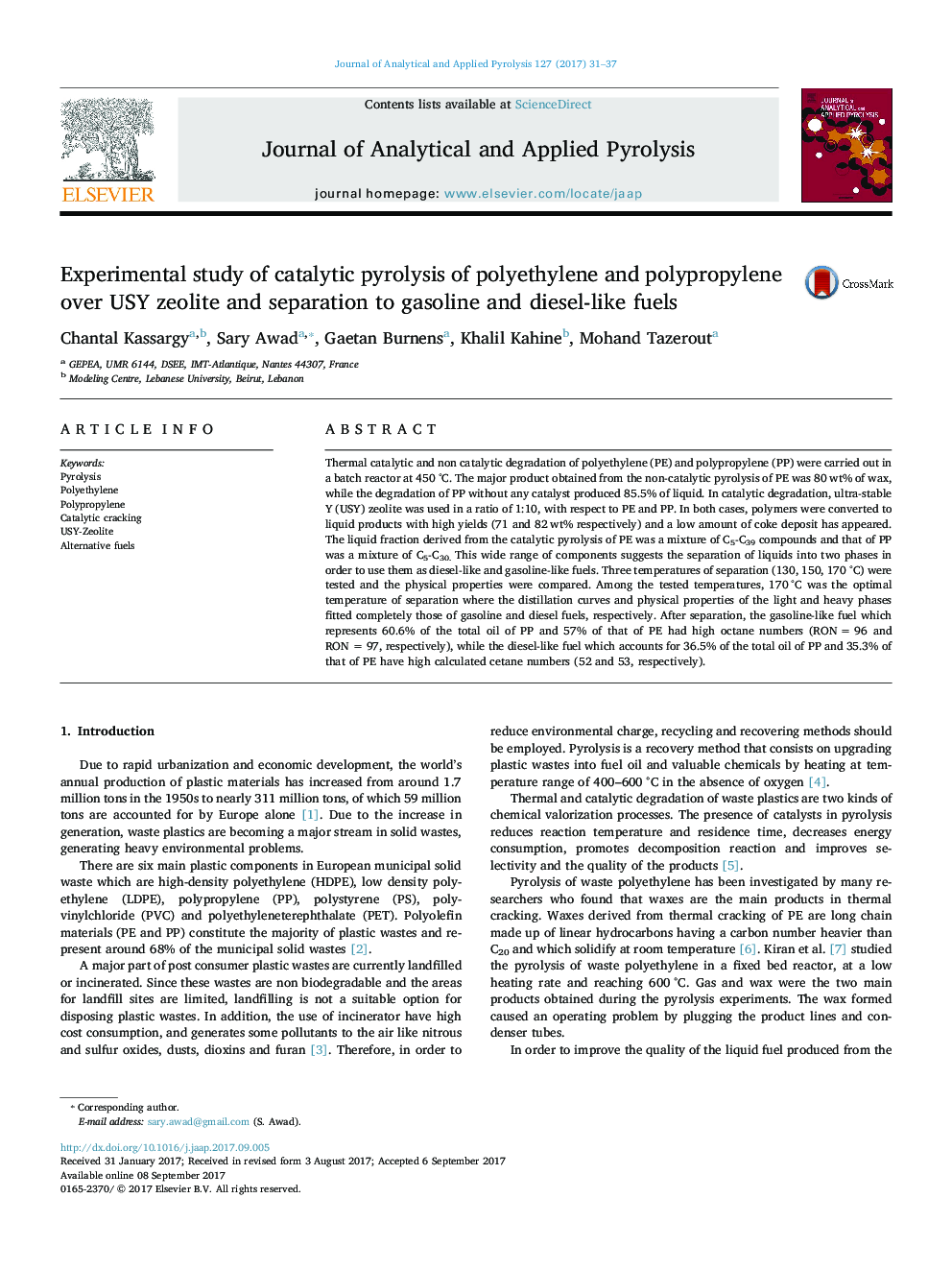| کد مقاله | کد نشریه | سال انتشار | مقاله انگلیسی | نسخه تمام متن |
|---|---|---|---|---|
| 5134416 | 1492950 | 2017 | 7 صفحه PDF | دانلود رایگان |

- Non-catalytic and catalytic cracking of PE and PP over USY catalyst in a batch reactor was studied.
- Non-catalytic pyrolysis of PP contained branched hydrocarbons showing a preferential cracking position.
- The liquid product derived from catalytic pyrolysis of PP and that of PE was respectively rich in C5-C11 and C10-C13 compounds.
- After separation at 170 °C, Light and heavy fractions of pyrolytic oils of PE and PP met the standards of gasoline and diesel fuels.
Thermal catalytic and non catalytic degradation of polyethylene (PE) and polypropylene (PP) were carried out in a batch reactor at 450 °C. The major product obtained from the non-catalytic pyrolysis of PE was 80 wt% of wax, while the degradation of PP without any catalyst produced 85.5% of liquid. In catalytic degradation, ultra-stable Y (USY) zeolite was used in a ratio of 1:10, with respect to PE and PP. In both cases, polymers were converted to liquid products with high yields (71 and 82 wt% respectively) and a low amount of coke deposit has appeared. The liquid fraction derived from the catalytic pyrolysis of PE was a mixture of C5-C39 compounds and that of PP was a mixture of C5-C30. This wide range of components suggests the separation of liquids into two phases in order to use them as diesel-like and gasoline-like fuels. Three temperatures of separation (130, 150, 170 °C) were tested and the physical properties were compared. Among the tested temperatures, 170 °C was the optimal temperature of separation where the distillation curves and physical properties of the light and heavy phases fitted completely those of gasoline and diesel fuels, respectively. After separation, the gasoline-like fuel which represents 60.6% of the total oil of PP and 57% of that of PE had high octane numbers (RON = 96 and RON = 97, respectively), while the diesel-like fuel which accounts for 36.5% of the total oil of PP and 35.3% of that of PE have high calculated cetane numbers (52 and 53, respectively).
Journal: Journal of Analytical and Applied Pyrolysis - Volume 127, September 2017, Pages 31-37